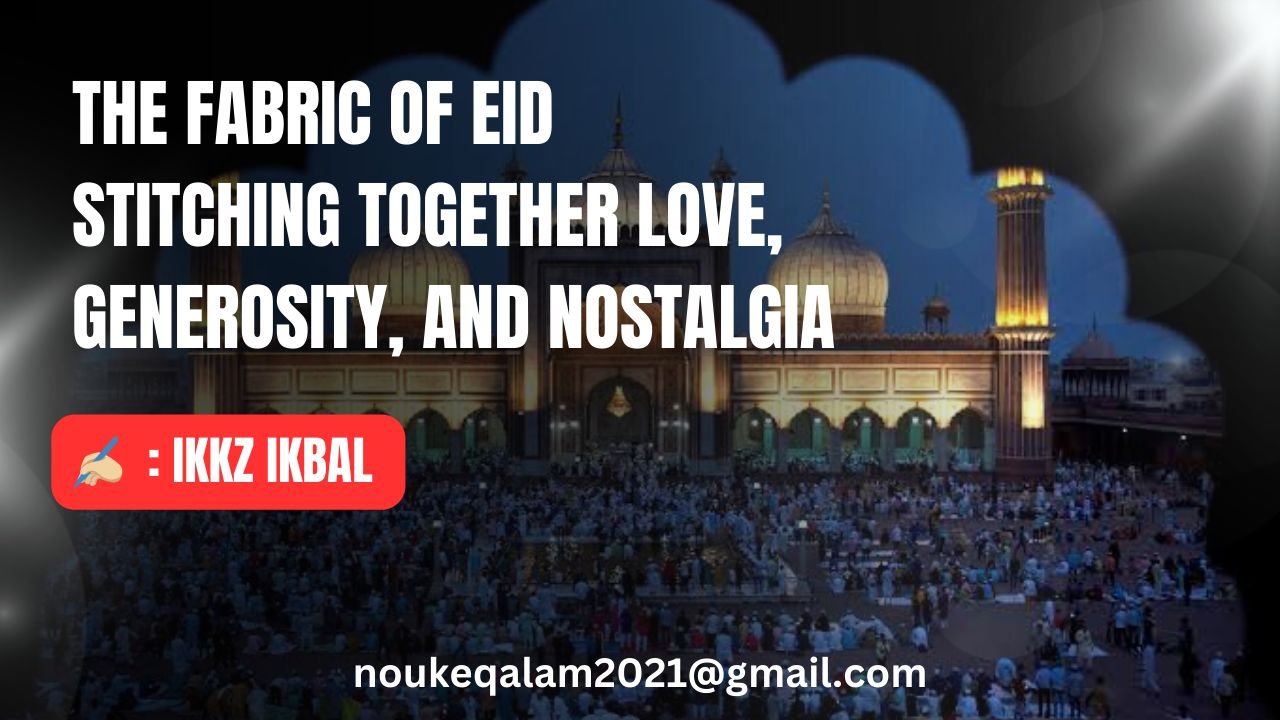✒️:. Mohd Ishaq Shah
Introduction:
We celebrate Raksha Bandhan on 9th August 2025 with the usual fervor and spirit. Yet my mind wandered to the essence of this practice, which has been observed in India for centuries. It raised questions in my heart—questions that my heart answered in an emotional way, which I share at the end of this write-up. For now, I will outline the history and meaning of this festival.
Raksha Bandhan is a popular and traditionally Hindu annual rite or ceremony central to the festival of the same name celebrated in South Asia. It is also observed in other parts of the world influenced by Hindu culture. On this day, sisters of all ages tie a talisman or amulet—called a rakhi—around the wrists of their brothers. This act symbolizes the sister’s prayer for her brother’s protection, while the brother, in return, promises to safeguard her and often gives a gift.
Etymology and History:
According to the Oxford English Dictionary (3rd Edition, 2008), the Hindi word rākhī comes from the Sanskrit rakṣikā, from rakṣā (protection) + ikā (diminutive form), meaning a protective amulet. Historical references—from James Tod (1829) to Jack Goody (1990)—describe the rakhi as both a charm against misfortune and a symbol of mutual respect and care.
Traditionally, Raksha Bandhan is observed on the last day of the Hindu lunar month of Shravana, usually in August. While the sister-brother version has its roots in folk culture, older rituals involved priests tying protective threads on patrons in exchange for offerings. Over time, the tradition expanded, crossing boundaries of caste, class, and even religion.
Cultural and Social Significance:
In rural North India, where village exogamy is common, Raksha Bandhan holds deep emotional value. Married women return to their parental homes, often escorted by brothers, to celebrate. In urban areas, the practice has taken on a more symbolic form but remains widely popular—fueled by films, media, migration, and technology.
The rakhi, when tied between non-blood relations, creates a voluntary bond of kinship. It is not merely a ritual but a cultural bridge, symbolizing trust and responsibility.
Introspection:
Despite the promise of protection, the ground reality is grim. Crime statistics reveal that many women—including those who tie a rakhi—still face violence. According to the National Crime Records Bureau, domestic violence accounts for over 30% of crimes against women. Reported crimes against women rose from 228,650 in 2011 to 428,278 in 2021—an 87% increase.
India’s Gender Gap Index in 2022 was 0.629, ranking it 135th out of 146 countries. In 2008, there were 21,467 registered rape cases; by 2023, the number had risen to 31,204. The highest was in 2016, with 38,947 cases. These numbers remind us that the symbolic promise of protection is often broken in reality.
Conclusion:
While festivals like Eid, Holi, Diwali, Dussehra, or Raksha Bandhan have religious and cultural roots, they also carry a deeper socio-moral message. Raksha Bandhan symbolizes the sacred bond between brother and sister—but in a broader sense, every woman is someone’s sister, daughter, mother, or wife.
God created women with a special role in continuing life and nurturing humanity. The rakhi is symbolic of the universal duty of men to protect women—not only those who tie a thread on their wrists but all women, everywhere. Likewise, women also bear a responsibility to preserve mutual respect and affection in society.
Let us pledge that every girl—whether or not she ties a rakhi—is our sister, and it is our moral, social, and ethical duty to protect her dignity and safety.




